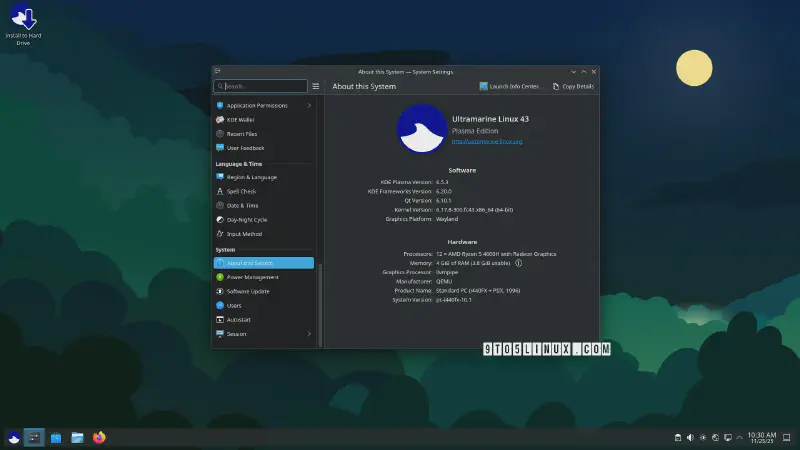
Ultramarine 43: A New Era for Fedora Derivatives on ARM and Desktop#
The developers behind Ultramarine Linux have officially announced the release of Ultramarine 43, a significant update built upon the robust and cutting-edge Fedora Linux 43. This latest iteration promises a more refined user experience, bolstered performance, and, notably, enhanced support for the popular ARM-based Pinebook Pro. This release underscores Ultramarine’s commitment to delivering a user-friendly yet powerful Fedora-based distribution across diverse hardware. Here are the key facts and implications of the Ultramarine 43 release:
- Ultramarine 43’s Foundation: The latest release of Ultramarine Linux, version 43, is officially available, built upon the solid and innovative base of Fedora Linux 43, ensuring users benefit from the latest upstream developments and security patches.
- Pivotal Pinebook Pro Support: A significant highlight of this release is the dedicated and enhanced support for the Pinebook Pro, making Ultramarine 43 an excellent choice for users of this popular ARM-based laptop and expanding desktop Linux capabilities on specialized hardware.
- User-Centric Fedora Derivative: Ultramarine Linux distinguishes itself as a user-friendly Fedora derivative, aiming to simplify the Fedora experience with out-of-the-box enhancements, improved defaults, and a focus on accessibility without compromising power.
- Leveraging Fedora 43’s Strengths: By incorporating Fedora 43, Ultramarine 43 inherently benefits from cutting-edge software packages, performance optimizations, and potentially newer desktop environment versions (e.g., GNOME, KDE Plasma, XFCE editions), offering a modern and responsive user experience.
- Expanding ARM Ecosystem Footprint: The explicit support for the Pinebook Pro underscores Ultramarine’s commitment to the growing ARM ecosystem, paving the way for wider adoption of desktop Linux on power-efficient and specialized hardware platforms.
- Community-Driven Enhancements: While specific details aren’t exhaustively outlined in initial announcements, new Ultramarine releases typically include custom tools, improved driver support, and tweaks derived from community feedback, aiming to deliver a more refined and stable system. The release of Ultramarine 43, particularly with its strong embrace of Fedora Linux 43 and specialized support for devices like the Pinebook Pro, marks a significant moment in the evolution of desktop Linux. Fedora itself serves as a crucial innovation hub for the Linux ecosystem, often pioneering new technologies that later trickle down to other distributions. By building upon Fedora’s robust foundation, Ultramarine offers a more approachable entry point for users who appreciate Fedora’s bleeding-edge yet stable approach but desire a more refined, out-of-the-box experience. Furthermore, the explicit support for ARM-based hardware such as the Pinebook Pro highlights a broader industry trend towards more diverse computing platforms, offering users alternatives to traditional x86 architectures and fostering innovation in low-power computing and specialized hardware segments. This development is indicative of a future where desktop Linux is not confined to a single hardware architecture but thrives across a spectrum of devices, from high-performance workstations to energy-efficient ARM laptops. We can anticipate more Linux distributions to follow suit, offering first-class support for a wider array of ARM-based computers, potentially leading to increased market share and diverse use cases for open-source operating systems. As community-driven projects like Ultramarine continue to innovate and bridge the gap between upstream development and user experience, the overall accessibility and appeal of Linux will only grow, promising a vibrant and adaptable landscape for both developers and everyday users in the coming years.
